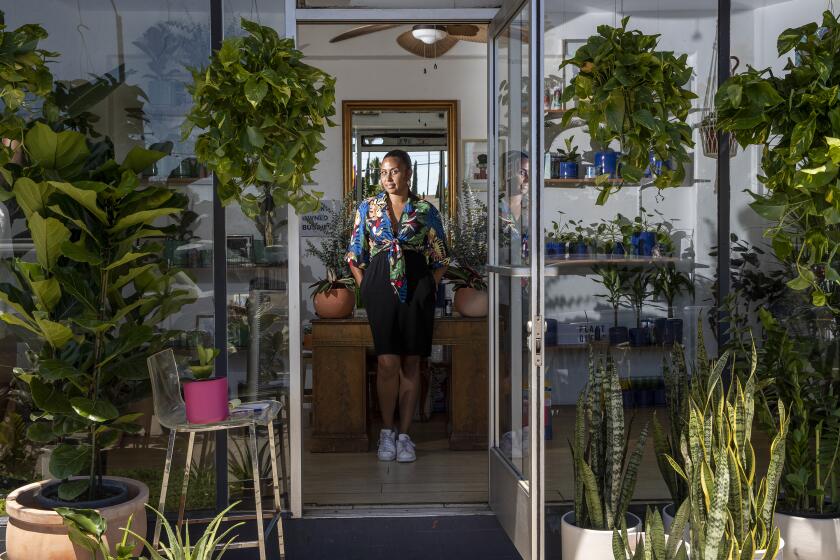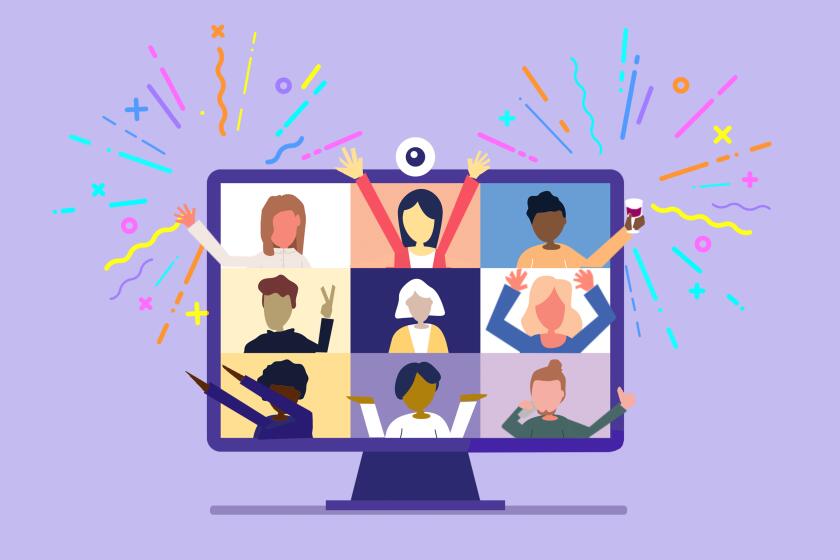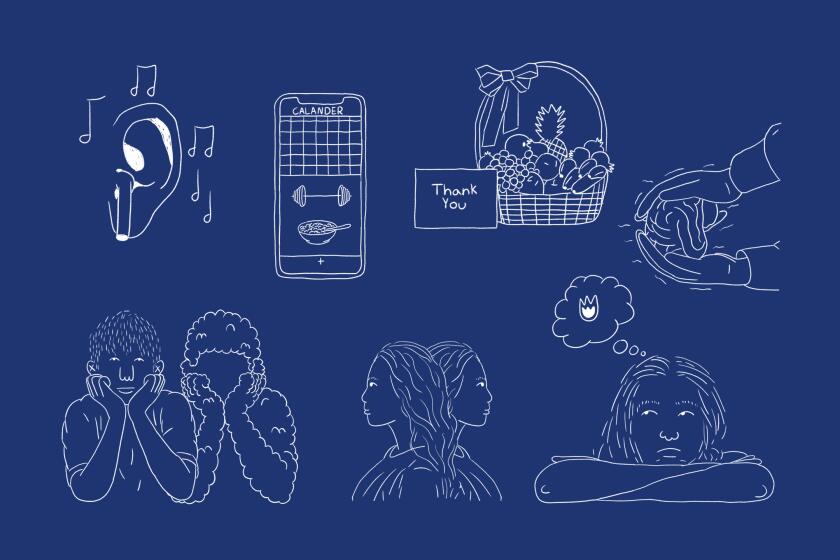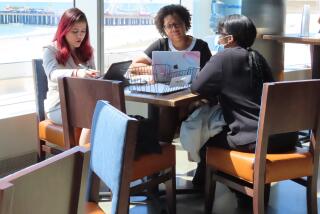Nail your Zoom job interview: How to prepare and what to wear, according to pros
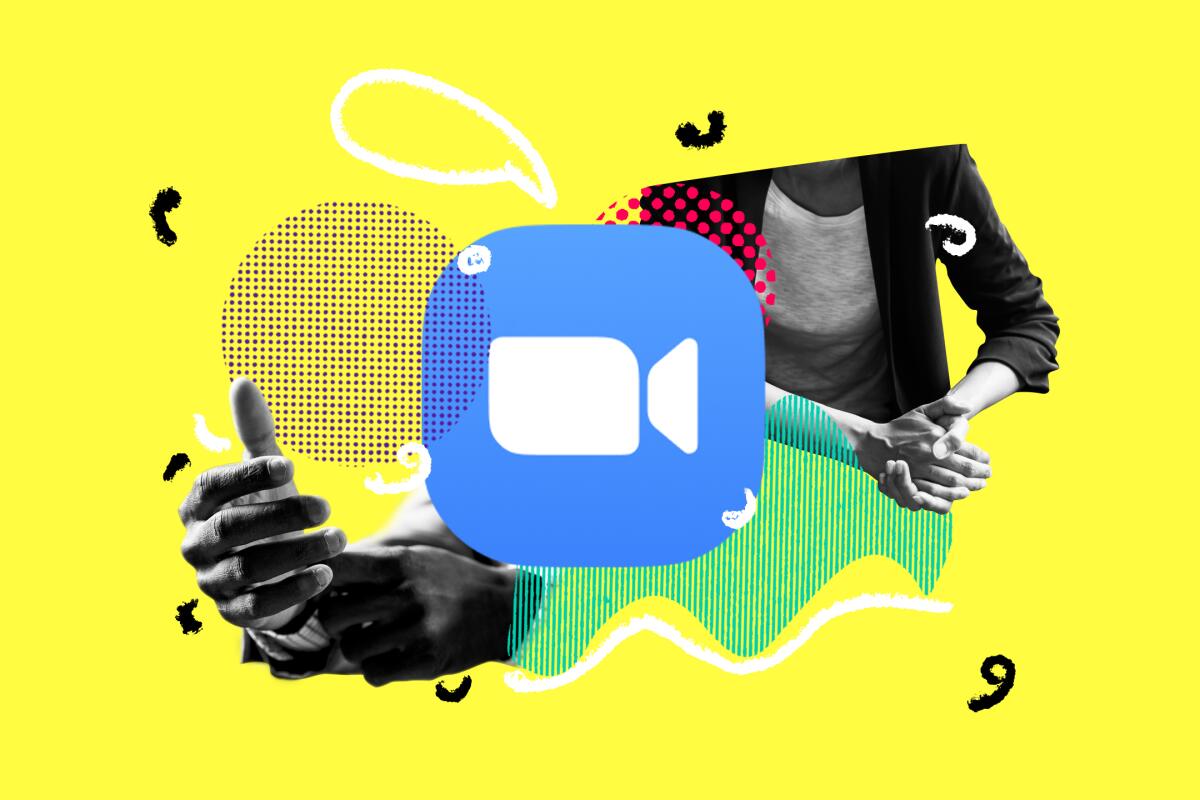
Job interviews are always stressful.
Now throw in a global pandemic, record unemployment and the potential technological pitfalls of a video call. If you’re on a job hunt, it’s normal to feel a little overwhelmed at the prospect of an interview over video chat.
It’s different from a regular job interview. But there’s a lot that’s the same too. And you don’t even have to worry about hitting traffic or finding the right address.
Take a few deep breaths, then read on to learn how to nail your next Zoom interview. (Full disclosure: Times owner Dr. Patrick Soon-Shiong is an investor in Zoom.)
Millions of Americans have lost their job due to COVID-19. Whether you’re looking into a new career or making your new financial reality work for you, we’ve got tips.
What to wear
You might be showing up to your work meetings in your pajamas at this point, but this is an occasion to break out your real clothes.
“You definitely want to dress like you would for an in-person interview,” said Adrean Turner, an executive leadership coach who hosts a podcast on personal and professional development.
You don’t have to don a full suit unless it’s a job where you’ll be expected to wear one daily. Think smart-casual: Button-down shirt, nice sweater, possibly a blazer. Bright solid colors will work better than stripes or prints, which can create a distracting moiré pattern over video.
Following stay-at-home orders, Amorette Brooms pivoted her fashion business to houseplants.
And though it may be tempting to go business on top and Zoom party on the bottom, wear real pants. You never know when you’ll unexpectedly have to stand up, and you don’t want your potential future boss to get an up-close look at your sweats.
If you wear makeup, apply a bit more than you normally would. Cameras tend to wash out our faces; you’d be shocked at how much makeup TV anchors apply.
Be careful with your accessories: Metallic jewelry and glasses can potentially reflect the light in an unpleasant way.
The best way to find an outfit that’s flattering and comfortable is to test-drive it.
The age of social distancing is surprisingly social. Party ideas, pointers and more to make your next Zoom your best yet.
Anticipating technical difficulties
Ask your interviewer ahead of time what platform you’ll be using for the interview. Make sure the software is installed and updated on your computer the night before. Have a friend or family member do a test call so you can make sure your outfit, lighting and background look good (more on that below), and try out the camera, microphone and headphones to make sure everything sounds good. If you’re using a laptop, ensure that your charger can be plugged in and used from where you plan to sit.
If possible, use a LAN cable to wire directly into your internet instead of depending on Wi-Fi, says job search strategist Kamara Toffolo. Options as long as 200 feet are available online. And have backup: Charge your phone or hot spot and have it ready to go in case of an outage.
Unlike a traditional interview, you don’t need to be on the call 10 to 15 minutes early. You should be at your computer and ready to go when it’s time to connect.
In terms of your personal tech, preempt distractions. Your phone should be in Do Not Disturb, and all notifications should be turned off on your computer.
Setting up your space
Unlike in a regular interview, where you’re presenting just yourself, your whole personal space is on display here. Keep the background as neat and uncluttered as possible. There’s an understandable instinct to use this opportunity to highlight your personality or achievements, but awards, fancy books and framed photos will just be a visual distraction for the interviewer. If you’ve done something your interviewer should know about, tell them.
The light source should be behind your monitor, not behind your face or otherwise in frame where it can blind the person on the other end. Overhead lighting is notoriously unflattering, so keep the ceiling light off and use an adjustable-arm desk lamp. Point the light directly at your face or, if that’s too harsh, at the wall closest to you to bounce off.
In a regular interview, you’d ideally have your résumé, a list of thoughtful questions, and a paper and pen to take notes. All those things still apply here, though you can have them open in other tabs instead if that’s easier for you. You might consider asking, “Is it OK if I take a few notes?” so the person you’re talking to doesn’t think you’re tabbing over to check Twitter while they talk.
You can help yourself relax amid the pandemic. Start by shedding negative thoughts
Body language and selling yourself
When you frame yourself in the camera, you want the other person to be able to see you from about midchest up past the top of your head. If you’re too close, you look like a gigantic floating head; too far back and it’s tough to see your facial expressions.
Eye contact is one of the most important nonverbal aspects of a job interview, and it gets tricky here. Looking your interviewer “in the eye” will read as looking down over video. When your interviewer is speaking, try to look into the camera (often next to the light at the top of the screen). Making sure you get the angle right should be part of your pre-interview test drive.
Sit up straight and practice “active listening”; don’t slump back and glaze over when you aren’t talking.
“You really need to be amped up, at least 30% more than your normal persona, on video to be perceived as even having a pulse,” said Laura DeCarlo, executive director of Career Directors International, a membership organization for résumé writers and career coaches.
So be ready to nod, smile and gesture. Act as if this is the absolutely most enthralling conversation you’ve ever had, even if you’re listening to someone outline the organizational philosophy on shared spreadsheet management.
Though there are a lot of differences, the most important work you can do is the same as you would for an in-person interview. Meredith Fineman, an entrepreneur and author of the book “Brag Better: Master the Art of Fearless Self-Promotion,” says to treat it like a PR campaign where you’re the product. Have your pitch ready to go: who you are, what you do, what you care about.
“Play up your strengths and the things you can control — your preparation,” she said.
And good luck. You’ve got this.
More to Read
Sign up for The Wild
We’ll help you find the best places to hike, bike and run, as well as the perfect silent spots for meditation and yoga.
You may occasionally receive promotional content from the Los Angeles Times.
